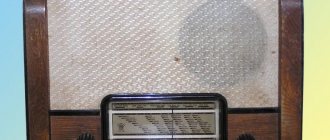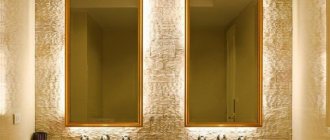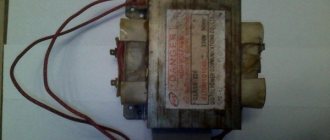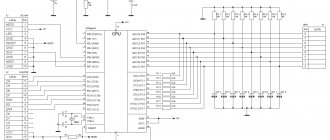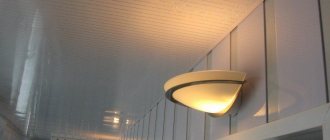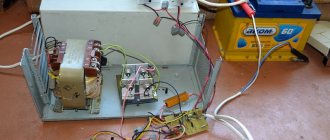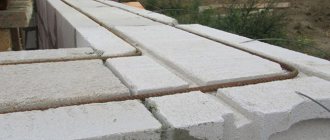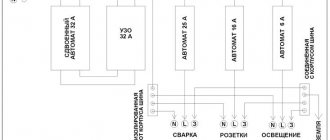Gradually, everyone is abandoning analogue television, giving preference to digital broadcasting. The largest providers are also restructuring to work with a newer, modern format. The era of analogue TV is gradually coming to an end.
In order for previously installed home antenna devices to complete their resource, it is enough to connect a DVB-T receiver to the TV, as a result, digital signals will be received correctly.
You can make an antenna for digital television with your own hands, so there is absolutely no need to go to the store and spend extra money. You don’t need any special skills or equipment; you can create the necessary design using available tools.
Now we will answer in detail the question of how to make an antenna for digital TV. We will carefully analyze the process, select the optimal material, and also carry out all the necessary calculations. Nevertheless, first we will deal with the theoretical nuances.
Operating principle of an antenna for digital television
Regardless of the signal format, it is transmitted from the tower emitters. Reception of the wave channel is provided by the antenna device. To receive a digital signal, you will need a sinusoidal device with the highest possible frequency, which is measured in MHz.
When an electromagnetic wave passes through the surface of the receiving beams of the antenna, a V-voltage is induced in it. Each wave contributes to the formation of a different potential, marking it with its characteristic sign.
Under the influence of an induced voltage, an electrical current flows in a closed receiving circuit with resistance R. It is gradually growing. Processing is carried out by the TV circuit, the picture is displayed on the monitor, and the sound is broadcast through the speakers.
You won't be able to connect digital broadcasting using a regular indoor antenna. Firstly, you will need an intermediate link that will provide decoding of information - a DVB-T receiver. Secondly, you should use a UHF antenna or Turkin antenna for DVB.
Antenna figure eight
How to make such an antenna with your own hands? First you need to prepare the material. Then carry out the appropriate calculations. At the final stage, assemble the structure and connect it to the TV. Nothing complicated. Every user can cope with this task.
Materials for antenna assembly
Making an antenna for digital television is not difficult. The list of materials used will vary depending on the type of antenna device. For example, if you wish, you can make it even from the most ordinary beer cans.
To produce a good and simple TV antenna for digital channels, you will need copper or aluminum wire with a thickness of 2 to 5 millimeters. In general, it will take only 1 hour to create such a design. You also need to use:
- handset;
- corner;
- copper or aluminum strip.
You will definitely need a tool that will allow you to bend the frames to the required shape. To bend the wire, use a hammer after securing the material in a vice.
You can make your own antenna not only from wire, but also from cable (coaxial). Choose a plug that matches the connector on your TV. Naturally, you also need to fix the structure; the bracket is made from scrap materials.
As for the cable, it must be taken with a resistance in the range of 50-75 Ohms. Particular attention should be paid to insulation if the device will be placed outdoors.
The specifics of fastening are determined in accordance with where the structure will be located. For example, residents of multi-storey buildings will be able to make their own antenna for digital TV and hang it like a home antenna, i.e. on the curtains. To do this, you will need large pins that will serve as a fastening element.
However, if you want to place the created device on the roof, then you need to make a bracket. To do this you will need a file, a soldering iron and a needle file.
We've sorted out the spiral antenna, but you can also make another design - a double square. It is made from copper, brass or aluminum tubes. Wire 3-6 mm thick is less commonly used. In general, the choice of material is determined in accordance with the MF band and the number of channels.
Double square - two frames that are connected by an upper and lower arrow. The small frame is a vibrator, and the large one is a reflector. To achieve maximum gain, increase the number of frames to three. The third square is the director.
The mast must be made of wood. At least its upper part. Please note that it should start at a distance of one and a half meters from the level of the frames.
So, step by step instructions:
- Take the coaxial cable and strip it from both ends.
- One end will be attached to the antenna, the wire should stick out 2 cm.
- The screen and braid are twisted into a bundle.
- We get two conductors.
- Solder the plug to the second edge of the cable. A distance of 1 cm is sufficient. If you use a crimped metal plug, you can skip further steps.
- Tin and make 2 more conductors.
- Wipe the solder joints of the plug with alcohol.
- Place the plastic part of the plug onto the wire.
- A single core is soldered to the central input of the plug.
- A multi-core harness is soldered to the side entrance of the plug.
- Crimp the grip around the insulation.
- Screw on the plastic tip or fill it with glue.
Calculation
To set up digital television reception, it is absolutely not necessary to calculate the wavelength. Just try to make a broadband design. As a result, you will be able to receive the maximum number of signals. To achieve this result, add additional elements to the T2 antenna with your own hands. It is about them that will be discussed further.
The calculation of an antenna for digital TV is based on determining the signal transmission wave. Divide this value by 4 to get the required side of the square. To determine the distance between the two components of the device, make the outer sides of the rhombuses a little longer, therefore, the inner sides, on the contrary, should be shorter.
If you don’t want to calculate the dimensions of the antenna yourself, use ready-made drawings:
- The inner side of the rectangle is 13 cm.
- The outer side of the rectangle is 14 cm.
The difference is the distance between the squares; by the way, they should not be connected under any circumstances; the extreme sections provide the necessary maneuver for folding the loop. It is to this that the coaxial antenna wire is attached.
Antenna manufacturing
If we calculate the entire length, we will end up with a value of 112 centimeters. Cut the wire or any other material that you plan to use, take a ruler and pliers, and begin to bend the structure. The angle should be 90 degrees. If the sides do not match in length, it’s okay, a small error is acceptable.
Initial data for making an antenna for digital TV:
- The first element is 13 centimeters and 1 centimeter per loop, by the way, it can be bent right away.
- Two elements of 14 centimeters each.
- Two are 13 centimeters each, but there must be a turn in the opposite direction; here a bend is created to another square.
- Two more sections of 14 centimeters each.
- The last one is identical to the first one.
The antenna frame for digital TV is ready. If you did everything correctly, then between the 2 halves there is a gap of several centimeters in the middle. Naturally, there may be minor differences. After this, the loops and bend areas must be cleaned until no metal is visible. Processing is carried out with fine-grain sandpaper. We connect the loops and crimp them with pliers to fix their position.
The design itself is ready, but in order for the antenna made for T2 to function correctly, the cable must be processed. We start with double-sided stripping of the wire. One edge will connect directly to the antenna. You need to strip the cable in this area so that the cord sticks out about two centimeters. If you get a little more, you can simply cut off the rest later.
We twist the screen and cable braid into a bundle, as a result we get 2 conductors - a central core and a twisted element of several braided wires. All this needs to be tinned.
Using a soldering station, solder the plug to the second edge of the cable. A centimeter length is quite enough, small errors are acceptable. According to the principle described earlier, you need to make a pair of conductors and tin them.
The plug is placed in those areas where soldering will be carried out in the future; first wipe it with alcohol or a special solvent. Then, using a file or emery, we clean it. Place the plastic plug element onto the cord. Now start soldering. Attach a core to the central entrance, and a multi-core braid to the side entrance. Crimp the grip around the insulation.
Screw on the plastic tip; some experts even fill it with glue or a special sealant to strengthen the fixation. While the fixing base is still wet, quickly assemble the plug by screwing on the plastic part, and then remove excess glue or sealant. As a result, it will be possible to maximize the service life of the plug. The homemade product has been created, it's time to connect it.
Connection
Connect the cable and the frame of the homemade DVB T2 antenna. It is absolutely not necessary to bind to any specific channel, so solder the cord in the middle. As a result, a broadband antenna will be created that will receive the maximum number of TV channels. Solder the second split end of the wire to the other two sides again in the middle, previously you stripped them and also tinned them. To extend the reception range, do not solder the cable from the bottom.
When the structure is assembled, it must be checked. We connect the tuner and turn on the TV. If digital television receives, for example, you managed to set up 20 channels, you need to finally complete the assembly. Fill the areas where soldering was carried out with sealant.
However, if there are very few active channels or there is some interference, then you need to find a place where there will be an optimal signal. If there are no positive changes, change the antenna cable. To simplify the testing process as much as possible, use telephone wire, it is quite cheap. Solder the plug and frames to it. If the signal quality has improved, then the problem is really in the cable. A digital set-top box will broadcast channels even if noodles are used, but as practice shows, its service life is extremely limited.
To protect the cable connection areas and antenna frames from precipitation and other atmospheric influences, wrap the solder joints with ordinary insulating tape. However, this is not a permanent solution. A more effective option is to install heat-shrinkable tubing on the soldering areas, which will ensure proper insulation.
An alternative option with maximum reliability is glue or sealant. The fact is that these substances do not conduct current. Be sure to make a housing for the antenna; an ordinary plastic cover will do for this. If necessary, make indentations so that the frame “settles down”; do not forget about the cord outlet. Pour in the sealant and wait for it to dry. Everything is ready, we connect the equipment and enjoy digital TV.
Antenna for reliable digital TV reception
Hello Samodelkins and site guests! Nowadays digital television is broadcast throughout Russia, but not everyone receives it consistently. I suffered with my old decimeter antenna with an amplifier, sometimes it shows, sometimes there is no signal. I decided to make a new antenna that can confidently receive digital TV without an amplifier. Here is a drawing of the antenna itself.
For this we will need the following materials and tools.
Materials:
wooden block 0.7 -1.5 meters long, section 20 * 40 mm
Aluminum or copper wire 3–6 mm thick, 120 mm long; strip of foil PCB, size 40 * 50 mm, thickness 1 - 2 mm;
Self-tapping screws 16 mm long, screws and nuts M 3; television cable with a resistance of 75 ohms 5 - 10 meters; emery cloth. Tools:
electric drill; drill; screwdriver; hammer; insulating tape; soldering iron, solder, tweezers, vice, file, utility knife, glue gun and glue for it.
We assemble as follows.
Step 1.
We clean the block with sandpaper and paint it with any paint you have.
Step -2.
In a vice we bend the wire according to the dimensions shown in the figure.
Step -3.
We process the junction from the outer and inner sides with a file, for a better fit of the wire to the textolite plate. In the middle of the plate we make a 12 mm wide cut in the copper foil and carefully remove it with a stationery knife.
In the plate we drill two vertical holes of 4 mm each, and two horizontal holes of 3 mm each.
Step -4.
Using M3 screws and nuts, we attach the antenna to the plate.
We strip the end of the television cable. We solder the cable screen to the left copper strip of the plate, and the central core to the right. We secure the cable with electrical tape along the wire, as shown in the photo.
Step -5.
We fix the antenna to the block with self-tapping screws.
Fill the soldering area with glue from a glue gun so that it does not oxidize. We fix the antenna on a wooden pole or on an iron pipe. We install it on the roof of the house, or on the ground. The higher it is raised from the ground, the better the reception of TV channels will be.
We connect the cable to the TV and check the quality of reception of TV channels. The antenna should be directed towards the nearest television center. All the homemade stuff is ready.
I live in a low-lying area, and far from the television center, but nevertheless, this antenna consistently receives digital TV, even without an amplifier.
Whether you need such an antenna or not is up to you to decide. In the two weeks since I installed this antenna, the signal has never disappeared again. I wish you all success in your creativity. Until next time.
Become the author of the site, publish your own articles, descriptions of homemade products and pay for the text. Read more here.
Double or triple square for weaker signal
The TV antenna is used in villages, dachas and in areas that are located on the border of the coverage area of television towers. The device allows you to receive even a very weak signal. If you do everything correctly, the power of the TV signal will increase noticeably.
A double or triple square has only one drawback - you need to direct the structure to the signal source with maximum accuracy. Therefore, if you do not know where exactly the tower is, difficulties will arise.
The number of frames determines the signal quality. Therefore, if you are outside the coverage area, you don’t have to limit yourself to 2-3 frames, you can make 5. Do not open the antenna with varnish or paint it. This negatively affects the quality of signal reception.
What are the strengths of the design? First of all, the quality of reception. Even if you are far from the repeater, the signal will be clear. However, it will be possible to achieve a positive result only if the user correctly determines the dimensions of the frames and matching device.
Materials
To make an antenna for digital TV yourself, you need to prepare materials that will later be used to make the structure. The antenna is made from metal tubes or wire:
- 1-5 meter channel - copper, brass, aluminum tubes 10-20 millimeters thick;
- 6-12 meter channel channel - copper, brass, aluminum tubes 8-15 millimeters thick;
- decimeter range - copper, brass wire with a thickness of 3 to 5 millimeters.
Double square - 2 frames, which are connected by a pair of arrows (upper and lower). The smallest frame is the so-called vibrator, and the largest is the reflector. A device with three frames will have a higher TV signal gain. The third square is usually called the director.
Instructions for creating a T2 antenna:
- The top arrow (made of metal) must connect the middles of all frames.
- The lower boom is made using electrically insulating materials: wood, textolite.
- Arrange all the frames so that their centers are on the same line.
- The direct line should be sent to the repeater.
- The vibrator must be open circuit. Its edges are fixed to a PCB plate.
- If you made frames from metal tubes, then the edges should be flattened and holes should be made in them to fix the lower boom.
- The mast must be made of wood, or at least its upper part.
Size calculation
The calculation of an antenna for digital TV will directly depend on the range - meter or decimeter. The dimensions of the antenna with three frames are characterized by a large distance between the ends of the vibrator. You need to leave more distance - 50 millimeters.
The tables show the dimensions of two-element loop antennas. Meter range:
| Channel numbers | 1 | 2 | 3 | 4 | 5 | 6 | 7 | 8 | 9 | 10 | 11 | 12 |
| IN | 1450 | 1220 | 930 | 840 | 770 | 410 | 390 | 370 | 360 | 345 | 330 | 320 |
| R | 1630 | 1370 | 1050 | 950 | 870 | 460 | 440 | 420 | 405 | 390 | 375 | 360 |
| A | 900 | 760 | 580 | 530 | 480 | 250 | 240 | 230 | 220 | 210 | 210 | 200 |
| Sh | 1500 | 1260 | 970 | 880 | 800 | 430 | 410 | 390 | 375 | 360 | 350 | 335 |
UHF:
| Channels | IN | R | A | Sh |
| 21-26 | 158 | 170 | 91 | 152 |
| 27-32 | 144 | 155 | 83 | 139 |
| 33-40 | 131 | 141 | 75 | 126 |
| 41-49 | 117 | 126 | 68 | 113 |
| 50-60 | 105 | 113 | 60 | 101 |
Size of three-element antennas. Meter range:
| Channel numbers | 1 | 2 | 3 | 4 | 5 | 6 | 7 | 8 | 9 | 10 | 11 | 12 |
| D | 1255 | 1060 | 825 | 750 | 688 | 370 | 354 | 340 | 325 | 312 | 300 | 290 |
| IN | 1485 | 1260 | 975 | 890 | 812 | 438 | 418 | 400 | 385 | 370 | 357 | 345 |
| R | 1810 | 1530 | 1190 | 1080 | 990 | 532 | 510 | 488 | 470 | 450 | 435 | 420 |
| A | 630 | 532 | 412 | 375 | 345 | 185 | 177 | 170 | 163 | 157 | 150 | 145 |
| B | 915 | 775 | 600 | 545 | 500 | 270 | 258 | 246 | 237 | 228 | 220 | 210 |
| Sh | 1500 | 1260 | 970 | 880 | 800 | 430 | 410 | 390 | 375 | 360 | 350 | 335 |
UHF:
| Channels | D | IN | R | A | B | Sh |
| 21-26 | 134 | 158 | 193 | 67 | 98 | 152 |
| 27-32 | 122 | 140 | 176 | 61 | 89 | 139 |
| 33-40 | 110 | 131 | 160 | 55 | 80 | 126 |
| 41-49 | 99 | 117 | 143 | 50 | 72 | 112 |
| 50-60 | 89 | 105 | 129 | 45 | 65 | 102 |
Figure-of-eight television antenna
Creating a figure-of-eight antenna for digital TV begins with preparing the material. Let's take a closer look at what exactly is required to assemble such a device. An important step in making an antenna with your own hands is creating a drawing. We'll show you how to calculate important indicators to avoid complications during the installation process.
Design Features
There are a lot of different options on the Internet for creating an antenna device. Mostly users are offered a corner design, which can be made in several options. using copper or aluminum tubes. Such an antenna provides high-quality reception, but only in open areas in close proximity to the TV tower. Therefore, a figure-of-eight design made of wire or cable is suitable for a dacha.
If we talk about the shortcomings of the G8, there is only one - poor reception in densely built-up conditions. There are many more advantages: ease of manufacture, availability of materials, excellent reception in remote areas. Despite the name, the TV antenna is more visually reminiscent of two connected diamonds. You can make an antenna from an antenna cable. You will need a plug that matches the antenna connector on your TV. Without proper fixation of the receiving device, it will not be possible to achieve high-quality broadcasting. Therefore, use available materials and tools to create a reliable bracket.
Have you decided to make a figure eight out of cable? Choose a model with optimal resistance - from 50 to 75 Ohms. Special attention should be paid to insulation if the plans are for an outdoor antenna location. Determine the specifics of fixing the structure, based on the features of its location. For example, if you live in a multi-story building, then you can attach a homemade antenna to the curtains using ordinary pins. Of course, they must be large. To install a TV antenna on the roof, you need a high-quality bracket. You can make it using a soldering iron, a file and a needle file. With the spiral design, everything is more or less clear. Double square is another alternative. An antenna device of this type can be made from tubes. Both aluminum and copper and brass are suitable. In some situations, thick wire is used. Select the material according to the number of channels and range. The first square is always smaller than the second. It functions as a vibrator. The largest part of the structure is the reflector. The frames must be connected with arrows. In order to increase the signal amplification factor, it is enough to make more frames. For example, make a figure eight out of three squares or diamonds.
Assembly material
It is quite possible to make an antenna device yourself. To do everything correctly, follow expert recommendations and instructions. The base of the structure is made of copper or aluminum wire, the diameter is allowed from 2 to 5 mm. In about 60 minutes you can make a TV antenna and begin installation. If desired, users will be able to use alternative materials to make the figure eight:
- tubes;
- corners;
- cable;
- stripes.
Of course, we cannot forget the importance of equipment. Using the tool, you can bend the frames into the optimal shape. Secure the wire in a vice, and then bend the material with a hammer. The optimal material for creating a mast is wood. The mast should start somewhere from 1.5 meters from the level of the frames.
Drawing
You can set up high-quality signal reception even without preliminary deep calculation of the wavelength. To avoid problems, create a wideband design. This will guarantee maximum reception of TV channels. In the process of drawing and calculating the antenna, it is necessary to take into account the dimensions of the structure, as well as the presence of additional components that can improve the signal.
To draw the design, start from the wavelength of the signal. The final value must be divided by 4. The final value is the required side of the square. To calculate the optimal distance between two components of the antenna device, draw the outer sides of the rhombuses so that they are slightly longer than the inner ones. It is not necessary to draw a new sketch yourself; you can always use ready-made calculations. The length of the inner rhombus should be 13 cm, and the outer one - 14 cm. The difference in the length of the rhombuses is of fundamental importance. Please note that under no circumstances should they be combined. The outer sections allow the loop to fold properly. It is with its help that you need to secure the antenna cable.
Antenna assembly
The final length of the structure is 1 meter and 12 centimeters. Cut the wire using wire cutters, take a ruler, and then start bending it with pliers or another tool. Other materials are prepared using a similar principle. The optimal angle is 90°. By the way, the sides may vary slightly in length. Slight error is possible.
We received the following design parameters:
- 13 cm element. There remains one spare centimeter specifically for the loop, which can be bent.
- A pair of 14 cm elements.
- Pair of 13cm components. Don't forget about turning in the opposite direction. There should be an inflection to another rhombus.
- A couple more 14 cm components.
- The last detail fully corresponds to the first.
If the antenna frame for digital television is made by yourself, then you can move on to the next step. There should be a slight gap between the two halves. Certain errors and inconsistencies are possible, nothing to worry about. Strip the loop and bend. Remove the sheath until the metal core is visible.
Cleaning can be done with regular fine-grained sandpaper. Pre-connect the loops, and then clamp them in a vice.
The design is almost ready, but for correct operation of the antenna device, process the cable. Start with double-sided stripping. One of the edges is connected directly to the antenna. Process the cord so that it sticks out by 2 cm; the excess can be cut off. Twist the cable braid and screen into a bundle. This allows you to create two conductors at once. Tin the core and the made harness. Using a soldering station, attach the plug to the other end of the wire. Here is a brief step-by-step instruction for assembling the antenna:
- Stripping the antenna cable on both sides.
- Connect the wire to the antenna; it should stick out a couple of centimeters.
- Add an additional conductor by twisting the braid and screen.
- A plug is soldered to the other end.
- Make 2 more additional conductors.
- The places where soldering was carried out need to be wiped.
- The plastic plug is placed on the cable.
- Soldering a single core to the central entrance.
- The stranded harness is secured to the side entrance of the plug.
- Clamp the insulation and screw on the tip. You can also fill it with glue.
The TV antenna is assembled, so it's time to secure it.
Installation
The electrical cable must be connected to the antenna. You can solder the cord in the middle, since binding to a specific TV channel is completely optional. A broadband television antenna has been created, so reception of a large number of signals is guaranteed. The remaining split end of the cable must be soldered to the other sides of the structure.
Placing the cable at the bottom of the structure will lead to poor reception quality. Therefore, you shouldn't do this.
The antenna is assembled, so it's time to check its functionality. Turn on your digital receiver and TV. If you immediately managed to find 20 TV channels, then feel free to fill the soldering zones with sealant. What to do if a small number of TV channels are available for viewing or if there is severe image distortion or other interference? Select the optimal location for the antenna. Are there any positive changes? Replace the coaxial cable.
The verification procedure can be significantly simplified. To do this you will need an ordinary telephone wire. It's inexpensive, so there shouldn't be any problems. Using a soldering iron, attach the plug to the telephone wire. If the signal quality has improved, then you really need to change the coaxial cable. Tuners are capable of providing high-quality broadcasting, even if an ordinary “noodle” is used instead of a coaxial cable. However, practice confirms the limited operational life. You can protect the connecting areas and antenna structures from the negative effects of rain, snow and other precipitation using electrical tape. This is a temporary solution. To maximize the service life of the antenna device, use heat-shrinkable tubing. They guarantee high-quality insulation. The list of alternatives does not end there. You can use adhesive-based sealant. This substance does not conduct current. Don't forget to make a reliable housing for the TV antenna. Another option is a plastic lid.
Vibrator connection
Considering the fact that the frame is symmetrical, and the connection is made to an asymmetrical antenna cable, you need to use a matching device. The best option is a short-circuited loop. It is made from pieces of coaxial cable. The left segment is a feeder, and the right one is usually called a train. In the place where the feeder and cable will be connected, we fix the cable, which is subsequently connected to the TV.
What should be the length of these segments? The calculation is carried out in accordance with the wavelength of the received TV signal.
At one end you need to cut the cable, removing the aluminum screen. The braid must be twisted into a tight rope. We cut off the central conductor down to the insulation. The feeder also needs to be cut. Remove the screen, made of aluminum, and then twist the braid. However, we leave the central conductor.
The further assembly process is carried out as follows:
- Solder the cable braid and feeder conductor to the left edge of the vibrator.
- The feeder braid needs to be soldered to the right edge of the vibrator.
- A metal jumper connects the cable braid to the lower end of the feeder. These elements can also be fastened with metal wire. The main thing is that there is proper contact with the braid.
- The braid determines not only the electrical connection, but also the distance between the sections of the matching device.
- If there is no metal wire and jumper, then twist the braided lower part of the cable into a bundle, after first removing the screen and removing the insulation. To ensure proper contact, you need to solder the wire harnesses using solder that melts easily.
- The cable pieces should be parallel to each other. Distance – 50 millimeters (small error is acceptable). To secure the distance, special clamps made of electrical insulating materials are used. You can also attach the matching device to the textolite plate.
- The cable that is inserted into the TV socket should be soldered to the feeder (to the bottom). The braids are interconnected, like the central conductors.
To reduce the number of connecting elements, the feeder and cable connected to the TV can be made one. Remove the insulation where the feeder ends. This is done in order to install the jumper.
A matching device is a mandatory element that helps prevent interference. It will be especially useful if the signal transmitter (TV tower) is located at a great distance.
TV antenna “double (triple) square”
In remote regions and areas of poor reception, it is extremely difficult to set up “digital”. However, the situation can be easily solved by building an active antenna with your own hands. It will significantly improve signal reception. Therefore, the user will be able to configure all free channels without much difficulty. The design in question has only one serious flaw - it is necessary to point the antenna exactly at the TV tower, otherwise the signal quality will be unsatisfactory. Consequently, if the user has no idea where exactly the repeater is located, then he will encounter difficulties in the process of setting up the “digital”.
The more frames, the better the signal. Subscribers who are outside the coverage area can use more than three squares. Some users make 5 frames. It is forbidden to paint or varnish the TV antenna, as this will significantly reduce the quality of reception.
The obvious advantages of the design cannot be ignored. Of course, the strong point is the high quality of reception. Users will be able to catch about 20 channels, even if they are away from the tower. The main thing is to correctly determine the dimensions of all structural elements and the dimensions of the matching device.
Materials
To create your own TV antenna for digital TV, you need to stock up on certain consumables. Mostly the structure is made of wire or metal tubes. Not only the type of material affects, but also its thickness. For example, copper, brass and aluminum tubes can be used to tune meter channels 1 to 12. However, the first five channels require a thickness of 10-20 mm, and 6-12 - from 8 to 15 mm.
To tune UHF channels, use wire with a diameter of 3-5 mm. In general, the antenna design is simple and does not consist of a large number of elements. For example, a double square is represented as two frames connected by an upper and lower arrow. The smallest frame is a vibrator, respectively, the larger one serves as a reflector. The triple square has a considerable signal amplification factor, this has already been partially discussed earlier. The third frame is called the director.
Size calculation
The specifics of antenna calculation largely depend on the range. Of course, you need to focus on decimeter. Make an antenna for digital television so that its dimensions have a large gap between the ends of the vibrator. Try to leave as much margin as possible, for example 50 mm.
Antenna installation
Step-by-step instructions for manufacturing and connecting an antenna device:
- Make an upper arrow from available metal material, and then use it to connect all the frames from the middle.
- The lower boom should be made from consumables with insulating properties, for example, wood or PCB.
- All elements must be positioned so that the central elements are on the same line.
- The guide should be adjusted towards the TV tower.
- Use an open circuit vibrator. The edges of this square should be secured to a textolite plate.
- If the frames are made of metal, then their edges must be flattened. Make holes in them to secure the lower boom.
- The optimal material for making a mast is wood.
Butterfly antenna
The TV antenna can also be made in the shape of a butterfly. Such a device will be in no way inferior to a decimeter antenna. There is absolutely no need to do everything from scratch. It is much easier to convert a regular grille into a digital one for T2 tuning. To make it yourself, follow these simple instructions:
- Take a small board that will become the basis of the future antenna.
- Cut 8 wires, each 37.5 centimeters long.
- The middle of all wires must be stripped about 2 centimeters.
- Bend the wires until they form a V shape. The distance between the wires should be 7.5 centimeters.
- Cut 2 more wires, each of them should be 22 centimeters long.
- Strip the wires where they will be attached to the antenna base (board).
- Place the screws along the base of the antenna, and then connect the V-shaped elements with two wires.
- Connect the antenna and cable using the special plug.
Every user can create such a device. You don't have to buy anything. The antenna is made from improvised materials.
Manufacturing stages
Digital TV may soon completely replace analogue, but to receive it you need a modern TV or additional equipment in the form of a set-top box. In addition to the DVB-T2 receiver and TV receiver, you will need an antenna, and a device previously used for analogue channels will also work.
A situation may arise when there is no device for receiving radio waves at all, for example, a family moved to a new apartment and did not have time to install cable TV or install a satellite dish. In this case, you should try to make the device with your own hands from scrap materials. A striking example is an antenna for digital television made from cable.
It is collected in several ways. The simplest one is to remove two insulations from the wire, thereby making a pin structure. If you spend a little more time and effort, you can make a loop installation, which, due to its directionality and closed loop, will have more serious amplification.
To make a device from a coaxial cable, you will need, in addition to the wire itself, a regular plug. The manufacturing steps are as follows:
- A cable with a length of 500 to 550 mm is taken.
- Its pieces must be cleaned on both sides, exposing the central core, and the braid is connected into a pigtail.
- Next, the cable is twisted into a ring and secured with tape to a piece of plywood or similar material. You will need to leave a distance of about 2 cm between the ends of the wire.
- Another piece of cable about 180 mm long is taken and a horseshoe-shaped matching structure is made. Its ends are trimmed in the same way as in the case of the ring.
- Now you can begin preparing the main receiving part. One side of it is stripped until the core and braid are visible, and a plug is put on the other side.
- Both sides of the ring wire are combined with the matching component and the main cable, which is connected to the TV receiver via a plug.
This completes the process of making an antenna for a TV from a cable. As you can see, you don’t have to buy an expensive product to receive digital channels. A homemade design will cost much less and in terms of reception quality it can be in no way inferior to devices produced in a factory.
Much will depend on the signal level, so if the user is far from the nearest TV tower, the device may not receive all TV channels.
Thanks to some tricks, the quality of reception improves. The antenna will need to be installed outdoors. In this case, it is recommended to well insulate all exposed sections of the cable. It would be useful to manufacture a rigid frame, thereby increasing the service life of the product. Particular attention should be paid to the location of the device.
Initially, it is better to direct the structure towards the repeater; if it is not possible to achieve the expected results, you need to act experimentally - rotate the antenna until the most successful direction is chosen.
From coaxial cable
You can actually make a TV antenna manually using a cable:
- Cut approximately 530 millimeters of cable.
- Strip the cable on both sides, fastening the braid into a bundle and exposing the central core.
- Twist the cable into a ring or diamond shape and secure it with tape to the plywood. The distance between the cable rings should be 2 centimeters.
- Cut a piece of coaxial cable - 175 centimeters. Make a horseshoe-shaped matching device out of it. To do this, you need to strip the wire from both ends, as you did in the process of making rings.
- Prepare the antenna cable. The plug is put on one side, and the other is stripped. It is necessary to remove the central core and braid.
- Align the ring and matching device with the antenna cable.
As a base, you can use not only plywood, but also plexiglass.
Making a homemade antenna
Please note right away that any simple antenna is not universal and is designed to work in certain conditions. Therefore, before assembly, study the recommendations and, based on them, select the desired type of structure. First purchase a receiver that will process the received signal and transmit it to the TV.
From beer cans
A definite plus is the availability of materials and ease of assembly. The process will take no more than a quarter of an hour. To do this, make a hole in the bottoms of two cans. Remove the outer insulation from the end of the cable by 20 cm, without touching the braid. Pass it through the jars, with their necks facing each other. Secure the cord with bolts at the inputs and outputs. Secure the structure with tape to a pre-prepared wooden T-shaped tripod.
Figure 8
If the house is located in an open area, the figure-of-eight antenna that Kharchenko developed is the best option. These are two rhombuses connected and oriented along an axis running along the diagonal. The side is equal to the calculated half-length of the wave cut. Material – copper core with a cross-section of 2-3 mm or aluminum 5-6 mm. The ends of the cut are connected, and the diamonds too, so that the structure is complete.
Double, triple square
Such a television antenna is a set of squares made of copper or aluminum, placed sequentially along one axis. It is not recommended for cases where the receiving point is located at a great distance from the repeater. But the background created by other radiation sources, of which there are many in urban environments, is completely blocked. The base is made of wood. The antenna is turned towards the working tower.
From a cardboard box
This antenna is assembled with your own hands from scrap materials. The base is foil cardboard, from which two squares are cut. They must be bolted together to ensure reliable contact. The placement method can be seen in the video. This design is not suitable for the street, but in a room or on a loggia it will work no less effectively than an external modification.
Butterfly
This model is intended for outdoor installation. This means that copper is used less frequently due to its tendency to corrode. Aluminum with a cross section of 5-6 mm is ideal. Mark 4 points on a wooden base at a distance of 18-20 cm from each other. Draw the axis and perpendiculars. Angles are measured at 30 degrees. The antennae are laid along these markings and connected to each other according to the diagram.
Using a soldering iron
This is truly a DIY option and you will have to learn how to solder. In this case, you can even use steel. The difference from the previous model is that all connections are soldered, which makes the structure monolithic. The antennae are prepared in advance, and then soldered to each other according to the markings. The TV antenna is suitable for outdoor use. Vandals are not interested in it, since steel costs pennies, and copper and aluminum are much more expensive.
With bolts
This is also an easy way to assemble an antenna with your own hands. There is no need to solder anything. It is enough to stock up on bolts and nuts. You'll actually need a drill to drill the holes. The antennae are installed in recesses drilled according to pre-applied markings. Mounting involves fixing them to a wooden tripod. The design is lightweight, but strong, reliable and durable.
From coaxial cable
This option is most often used as a temporary option. Such an antenna for T2 is installed at the dacha, in cabins, in apartments where permanent residence is not planned. It is enough to correctly solder the elements of the ring and the cable going to the console. Moreover, you can connect both the central core and the screen braid. This “loop antenna” works great in a room if you place it on a window or balcony.
Antenna made from tin cans
To make a simple TV antenna for digital channels you will need a cable, a couple of aluminum or tin cans, and a small plastic pipe. A wooden plank can also be used as a base.
Remember that the antenna can only be created from aluminum or tin cans. Plastic or glass will not work. The main requirement is smooth, not ribbed, internal walls. Anyone can install such a device with their own hands in just a few minutes.
- Rinse well and then dry the jars.
- The end of the coaxial cable must be cut.
- Remove the insulation from the center core.
- Twist the braid.
- Once you have 2 wires, attach them to the jars.
- If you have a soldering iron on hand, solder the conductors. They can also be secured with self-tapping screws with flat heads. Twist a loop at the ends of the conductors, and insert a self-tapping screw with a washer into it, then secure it to the can.
- Pre-clean the metal, you need to take fine-grained sandpaper and remove plaque, as well as paint.
- Attach the jars to a plastic pipe or wooden strip.
- The distance is calculated individually.
- Connect the cable to the TV and try tuning the channels.
This is an emergency solution to the problem. Don’t be under any illusions; at best, several channels will be available in good quality. The final result directly depends on how far away the TV tower is, how “clean” the corridor is, and also how well the antenna is made.
Now you know how to make an antenna for tuning digital channels using improvised means.
How to make an antenna for digital TV with your own hands
Digital television is a useful invention, but, unfortunately, not every person knows what it is and what advantages it provides. Not every home has a modern TV receiver; owners of older models are forced to buy special equipment, which can be used by unscrupulous sellers. Together with the receiver, they can offer a special so-called digital antenna, the cost of which can reach 3,000 rubles.
Any decimeter design is suitable for receiving a digital signal, and if the necessary product is not available, you can make it yourself. Information on how to make a digital antenna from cable is described above.
In order for the device to receive as many channels as possible, you will need to correctly calculate its length. First, you need to go to the digital television website from the provider or to the website of the public broadcasting network. The main page should have a "Coverage Map" tab that contains all available stations.
In large cities there may be several television towers, so the closest one is chosen. Next, open the “Details” tab, where the required frequencies are determined. For example, for a channel package the frequency specified is 778 MHz.
With this information, it will be easier to determine the length of the device to be manufactured. Without going into complex calculations, you can calculate the size of the product using the following formula: the number 7500 is divided by the specified frequency. Thus, dividing 7500 by 778 gives 9.64 cm.
If there are several stations in the city, it is better to determine the average length of the structure. To do this, add several results obtained and divide by their total number.
